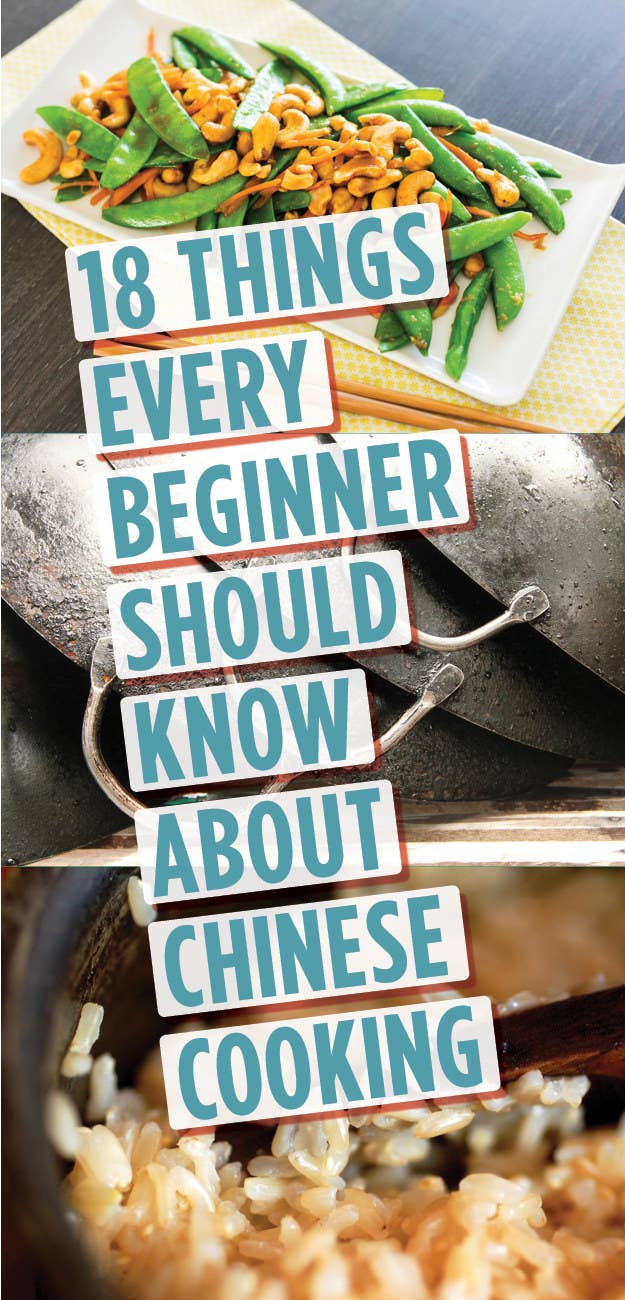
We hope you love the products we recommend! Just so you know, BuzzFeed may collect a share of sales from the links on this page.
Chinese food is delicious.
It's a staple of every decent person's regular diet. (Let's face it: British cuisine doesn't really hold a candle.) But if you want to cook Chinese food yourself and are a total beginner, it can be difficult to know where to start.
We spoke to Ching He Huang, cookbook author and Emmy award-nominated television chef – and now international ambassador of Chinese cooking (no big deal) – for her advice.
Whether you're confused about soy sauce or getting your rice wine and rice vinegar mixed up, or you just want to know how to pull together a really decent stir-fry, Ching knows what's up. Here are her tips...
1. You need fewer than 10 ingredients to start cooking Chinese food...but it won't taste ~authentic~ unless you know how to layer flavour combinations.
"In your store cupboard you should have a good oil. Then oyster sauce, which is absolutely one of my favourites as it adds another layer of umami to a dish, and it’s so versatile – you can use it as a marinade, in a stir-fry, in a braised stew. Good soy sauce; whether you use light or dark soy sauce is up to you. Definitely Shaoxing rice wine, because it enhances the sweetness of food. It leaves a sweetness in ingredients that have a slightly bitter note. Then toasted sesame oil and rice vinegar. I’d say those are your staples. Then from the fresh produce, garlic, ginger, chillies, spring onions, coriander. The rest you can play around with.
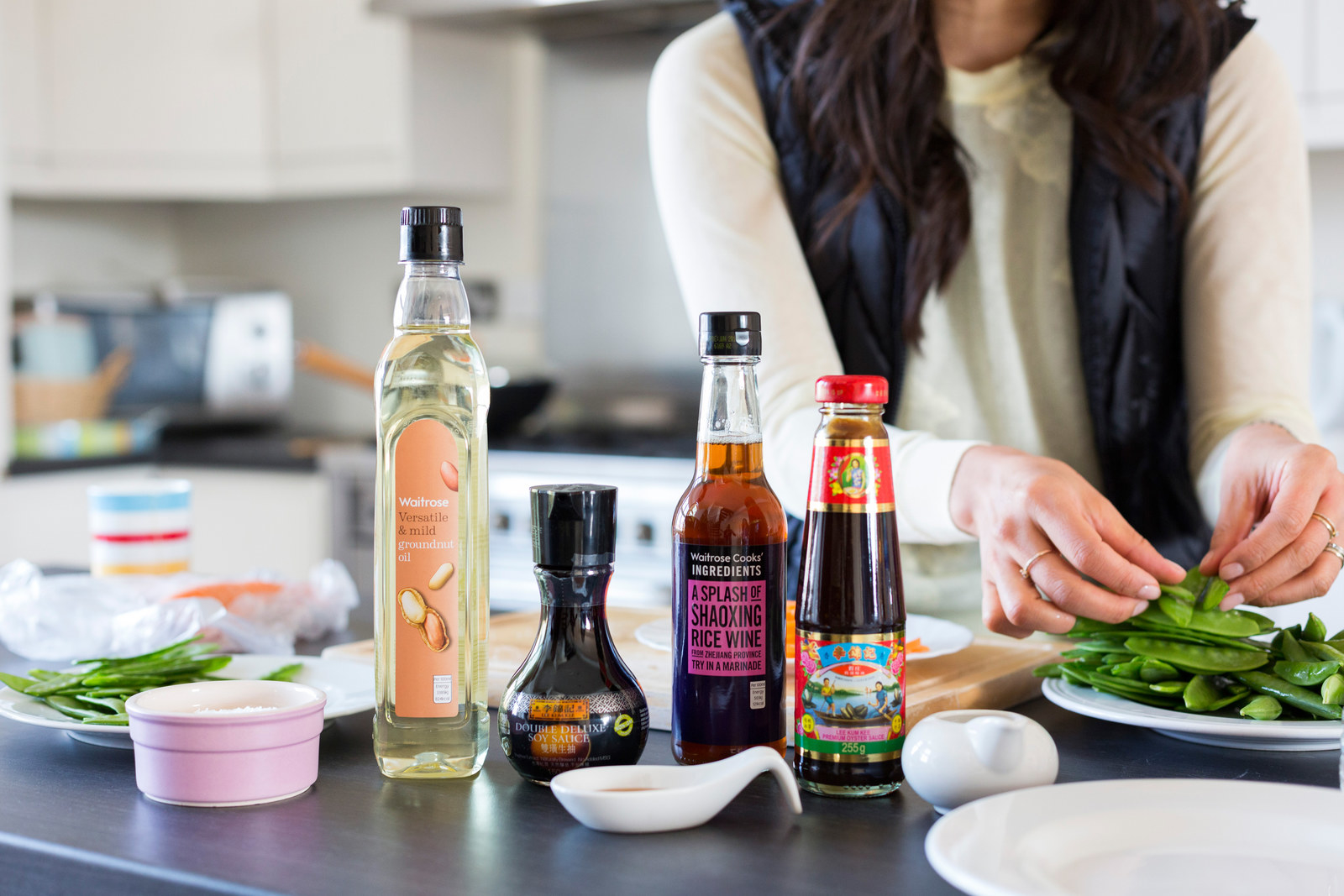
"But it’s so much more than just ingredients… It’s about layering different flavours so you can create hot and sour, or savoury sour, or savoury sweet. It’s about being able to create these flavour combinations that make Chinese cuisine supreme."
2. When you're choosing sauces, stick to brands that aren't overloaded with salt or MSG.
"For a consumer it’s difficult, because if you’re new to Chinese cooking you can spend money on a sauce which might not be the right one. You can’t exactly taste-test each one, but a good rule of thumb is to avoid sauces that are overloaded with ingredients or full of MSG. You don't need to find a sauce that has an entirely clean deck, but avoid those that have an unbalanced, overall very salty flavour.
"I like brands that have integrity in terms of using the best ingredients – I think that’s really important. For soy sauce, Lee Kum Kee is undoubtedly the best. The flavour, the umami-ness, the earthiness, that kind of salty, rounded, beany flavour that you get from real soy beans that have been fermented, you don’t really get in other brands. Some soy sauces have been watered down, or haven't been fermented properly and have salt and other fillers added. Soy sauce is not about just the salt, it’s about that rounded umami flavour. Too salty, you know they’ve just added salt."

3. You can buy ingredients in Chinatown, at the supermarket, or online.
"Online is great if you’re busy. Chinatown is good if you want those extraordinary, special ingredients. But typically Waitrose is really good. I love to go to my local fresh farmer’s market, but if you can’t do that there’s some great fresh produce suppliers you can get online too."
4. MSG is a naturally occurring salt. Don't be too scared of it.
"MSG can come in nature. Really good tomatoes being cooked down, beef, and parmesan cheese all have MSG. It’s a naturally occurring taste – when we say 'umami'*, we're talking about that deep savoury note you associate with MSG. But then MSG can also be man-made. I'll sometimes turn a blind eye and use it if it’s in sauces, and my grandmother lived to 80 and she was an MSG lover! It has its purpose because it does increase the umami flavour, but it’s up to you. If you’re intolerant to it, don’t have it in your food. I try to keep my food as clean as possible, but here’s the thing: You can't be 100% healthy 100% of the time. I have an 80/20 rule: 80% clean, 20% the odd naughty thing. That’s also my philosophy in terms of ingredients."
*Editor's note: Umami is the fifth taste. Read more about it here.
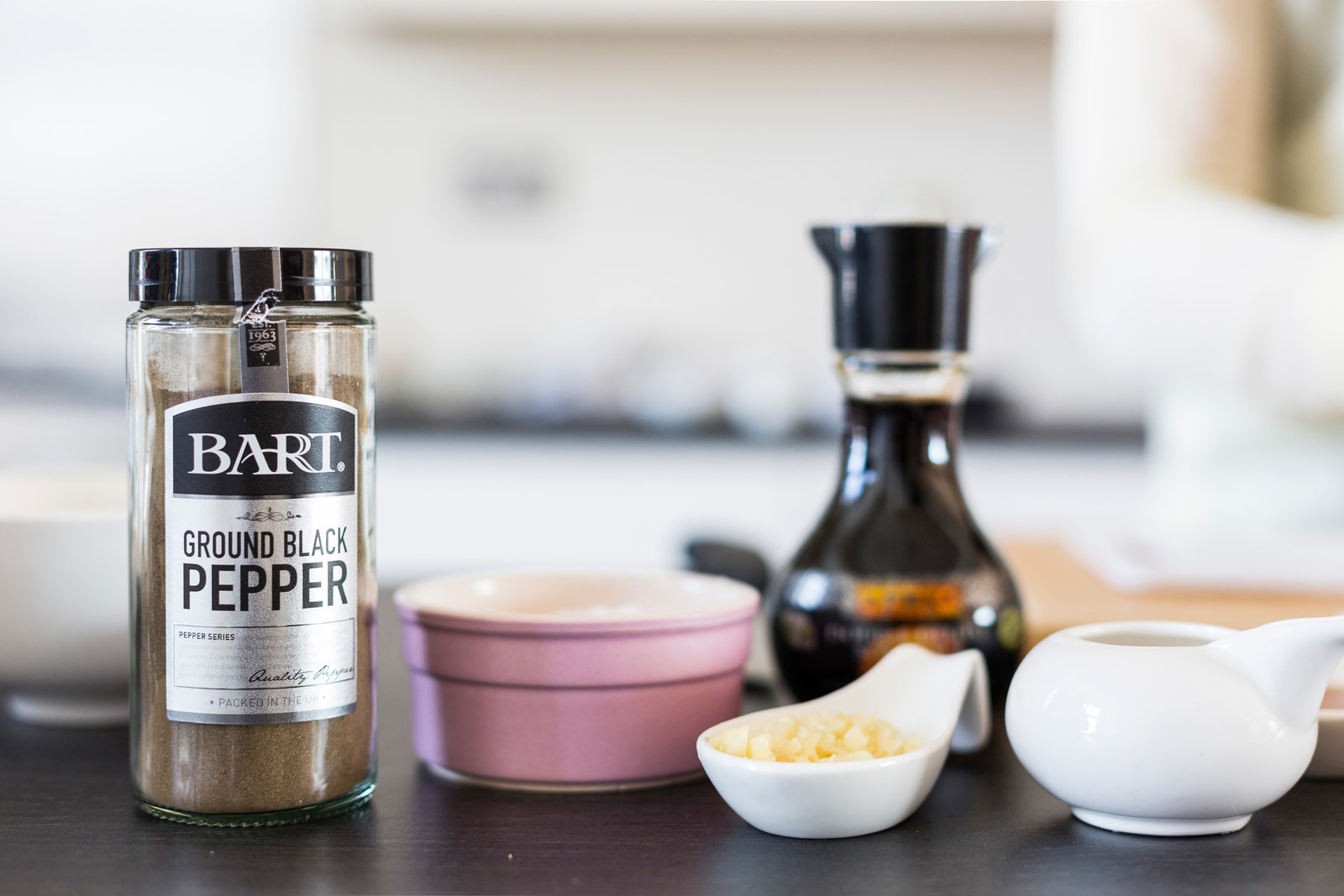
5. Dry ingredients shouldn't stay in your cupboard for more than a year.
"To be honest, I've had stuff in my cupboard that’s been there for years. Things like Shaoxing rice wine can last for ages because it just keeps fermenting. Oils, I’d say try and use within six months; they don’t go rancid or anything like that. Most soy sauces can last up to a year. Just make sure you keep everything in a cool, dark place, away from direct sunlight. It’s not a good sign if you’ve got things lasting that long though, as it means you’re not cooking!"
6. Seasonality is important and ingredients have to be fresh.
"For a Chinese person, in winter we have more stews, oilier, saltier dishes and use more robust ingredients. In summer we have more raw dishes, as raw dishes are deemed cleansing and are a bit healthier. We Chinese are obsessed with seasonality and getting fresh ingredients from the market. The ingredients have to be fresh – if they’re not, you can taste it immediately. Limp ingredients won’t last in the wok, and as soon as you put them on to the plate they’ll start to wilt."
7. The difference in light and dark soy sauce is fermentation.
"Light soy sauce is the first fermentation. It’s the first press of the soy beans, so it’s lighter in colour. It also tends to be saltier and is used for seasoning. Dark soy sauce has been fermented for longer so it’s deep, thick, and higher-viscosity and used to add richness of colour. It’s also not as salty and it’s used for braised dishes and for marinating."
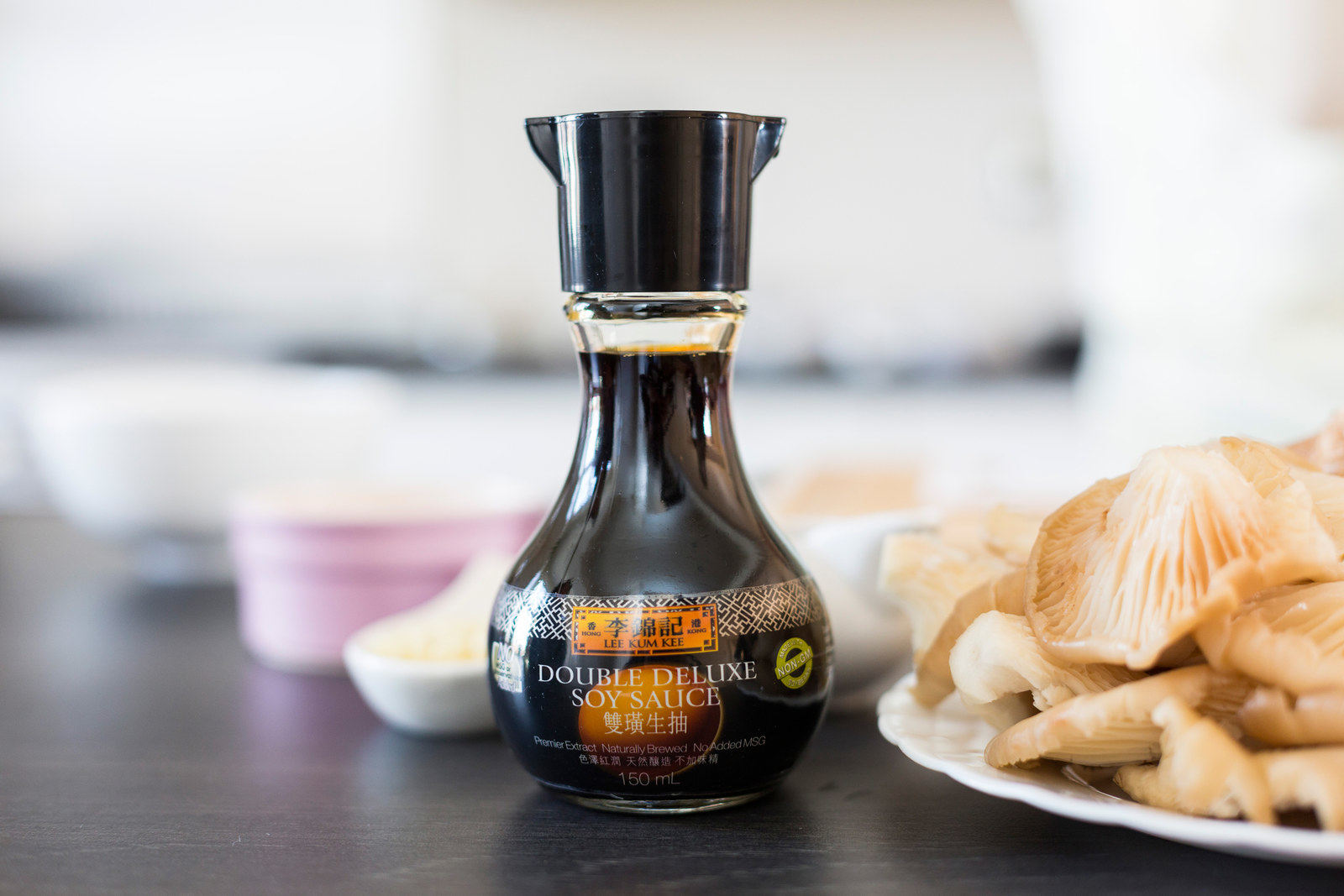
8. Be particular about your Shaoxing rice wine.
"Shaoxing rice wine I’m very particular about. I use a TTL brand from Taiwan, and it’s at least five years aged. Some of the other ones from China can be a little bit watered down. They say they make them all in the same place, but that’s not so true…"
9. There are different kinds of wok, and yes, you need one.
"You need a wok. A saucepan is the wrong shape because it has a wide base – when you’re cooking with it, you’re chasing the food around as opposed to the food falling to the centre. It’s the curvature of the wok that allows you to toss the food and for it to be cooked evenly.

"There's three main kinds of wok. The aluminium wok is cheap but a very bad conductor of heat and doesn't last long. You won’t have a great experience with that wok, but it’s the cheapest you can get. Then you can get a non-stick coated wok, but that’s a bit rubbish too because the paint comes off. I know, because I actually once endorsed and had a wok that was non-stick. It’s really bad for your health as you end up eating the coating! Then you have the stainless steel wok, which is good but expensive. Food sticks to it, and you also have to season it regularly with a little bit of cider vinegar or rice vinegar. If you don’t season it, it’ll rust. It can also have uneven hot spots. So it’s good but it’s not ideal.
"A new kind of wok is now available, though: the carbon steel wok. The best conductor of heat is carbon steel, as it heats up quickly and retains heat. My Lotus Wok is made out of carbon steel, and uses a new technology: nanosilica crystals. It’s like a sand crystal, and it’s been sandblasted in, so it gives a super smooth, non-stick surface which is entirely natural. In general, a good wok needs to heat up to 400 degrees and have a shallow base with deep sides. That’s what you call a real wok."
10. Tools-wise, all you need is a good chef's knife, a chopping board, and a wok.
"You need a good chef’s knife like a cleaver, a good chopping board, and a good wok – and that’s it. And if you want to go one step further, you can get a steamer: either a steamer rack or a bamboo steamer. They’re cheap as chips, like £2.50 in Chinatown, but you do tend to burn them on the sides. If you pop them on a wok or on a pot they start to go black."

11. Never throw everything into the wok at the same time.
"A really common mistake is bunging everything into the wok at the same time. You think, Oh, stir-fry, yeah, chuck it all in and stir it all up and it’ll be fine... No. Each element is broken down in chunks. You need to give the ginger some love, then the crunchier vegetables get some love. It’s layering and making sure each ingredient has time in the wok before it comes together later with the seasoning. Heat the oil, then put in your aromatics first, then your main ingredients, then all the sauces. Stir-fry is the easiest to get someone excited about cooking, but to master a stir-fry – to make it really exceptional – takes time and that journey. Repetition is key and practice is key. "
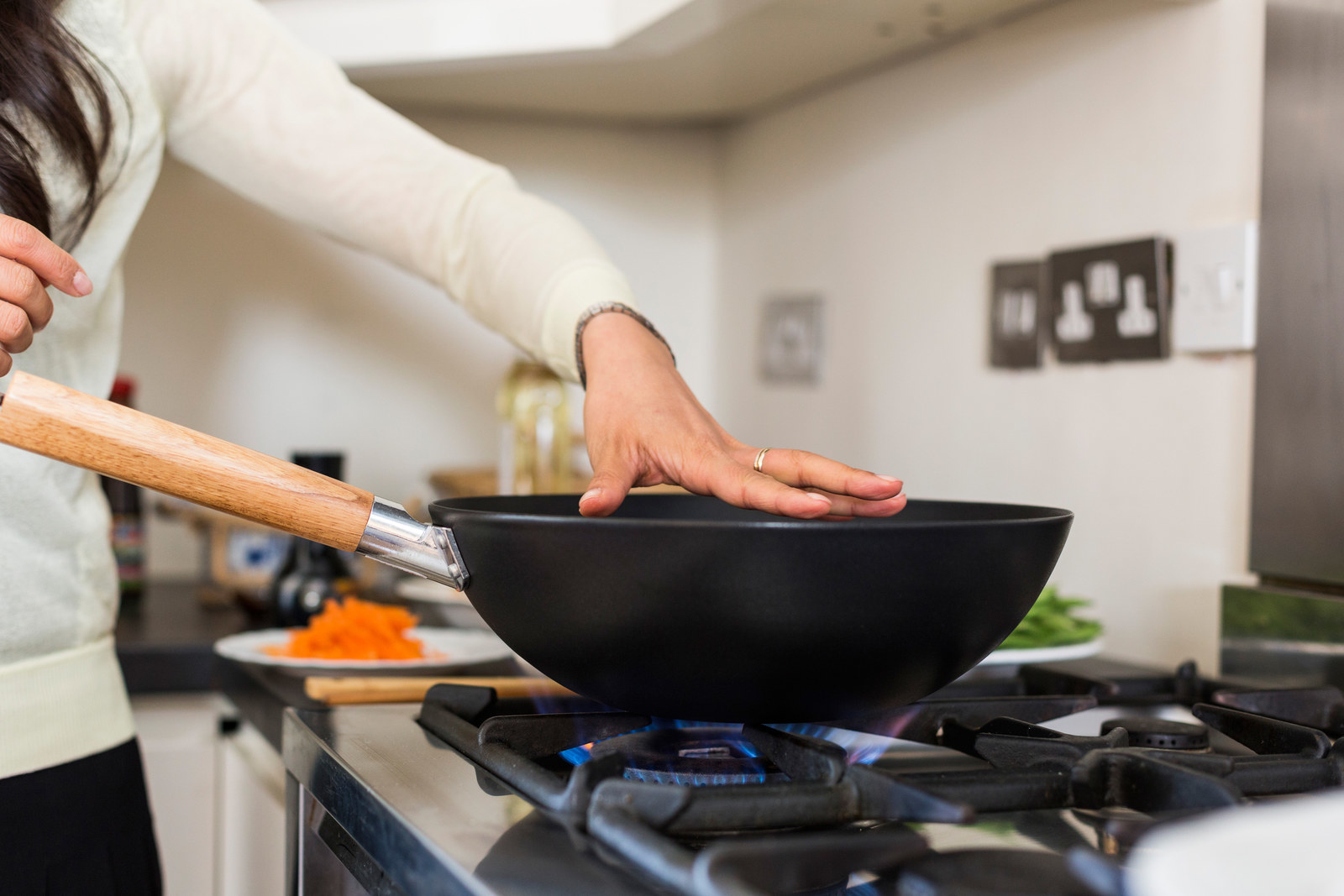
12. When you're cooking, make sure your wok is hot enough before you start and sizzles when you're cooking.
"The first rule is that you need the wok really hot before you even add the oil in, because then the oil is heated up instantly. If you add it in when the wok is still cool, you'll have oil that’s hot enough but a wok that isn’t, and you’ll end up with burnt food. When you put your hand in the wok (not touching the metal!) and you can’t keep it there for more than a second, it’s hot enough. Then when you're cooking, you have to always hear the sizzle; when you put ingredients in, it lowers the temperature and you can lose the sizzle, which is really bad."
13. Water is your best friend.
"The one thing that people don’t realise is that water is your best friend. If you want the best out of cooking your veggies, you need some steam. That’s my top tip."
14. For perfect rice, wash it first, then cook it for 15 minutes with double the volume of water to volume of grains.
"I’m obsessed with my rice cooker, but if you don’t have a rice cooker that’s fine. Just take a normal, medium-sized saucepan, wash the rice well – there’ll be people out there who say you don’t need to wash the rice, that rice production these days is super clean and whatnot, but it’s not just about the cleanliness, it’s about rinsing away the extra starch on the outside that’ll make your rice taste claggy and old.

"I like jasmine rice, but I now mix my jasmine rice with brown rice for texture and health and fibre and nutrients. Mix it up, put it in your pan, and then measure double the volume of water to the amount of grains that you have. For example, if you have 200g of rice, put in 400mls of water. Bring it to the boil, then once it comes to the boil smack the lid on, turn the heat down so it’s steaming away in there. In 15 minutes you’ll have perfect rice."
15. Mushrooms are the best meat substitute to make a Chinese recipe vegetarian or vegan.
"If you’re a vegetarian, your best Chinese meat substitute is mushrooms. There’s loads of kinds of mushroom. You can experiment with chunky, dry Chinese mushrooms that you rehydrate. There's also shiitake mushrooms, oyster mushrooms, enoki mushrooms, which are the thin, white ones, and king trumpet mushrooms, which are a thick stalk and are chunky. When you slice those into coins you can use them in vegetarian cuisine like scallops. They’re nice and meaty.
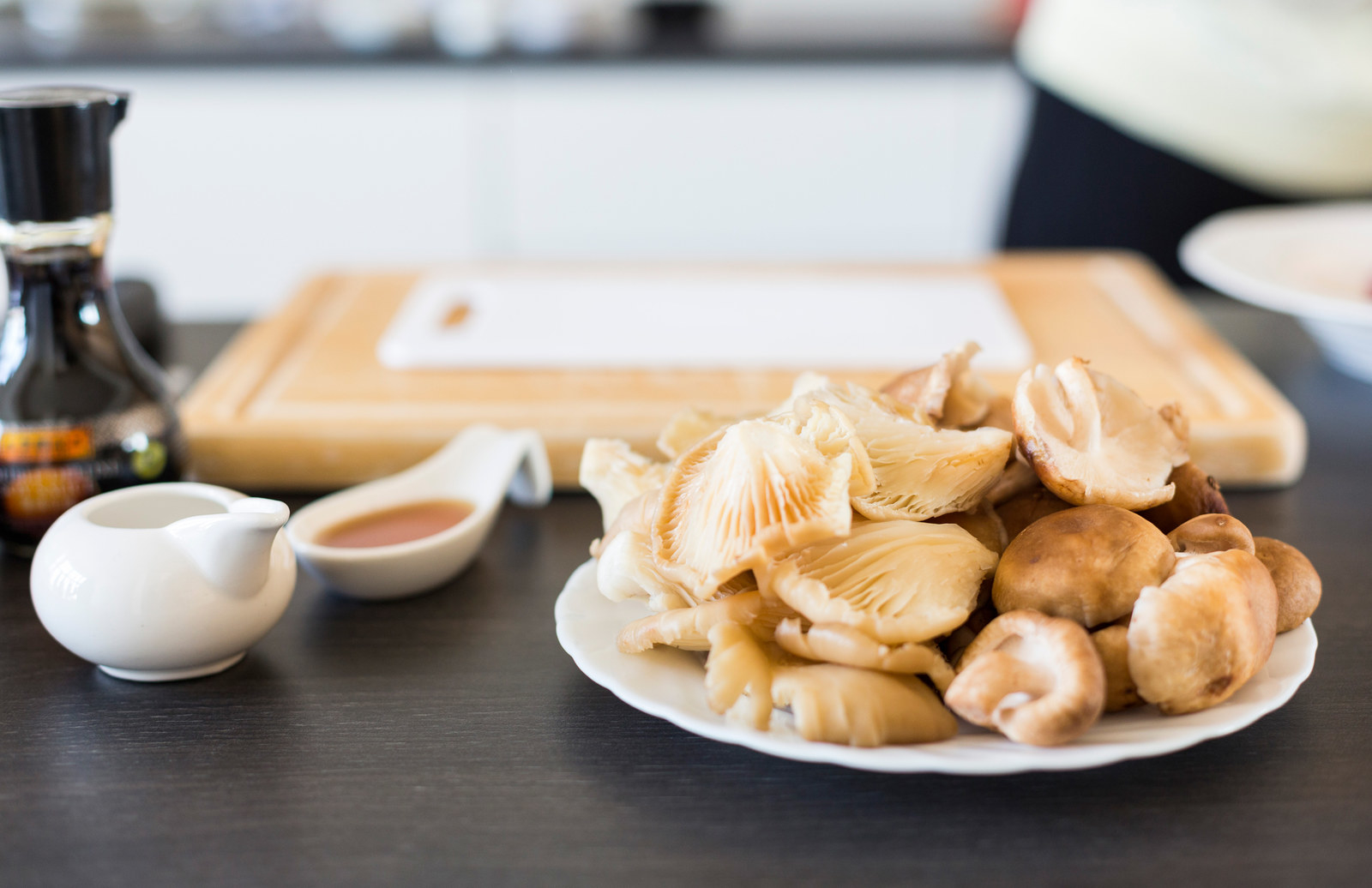
"There’s also a whole world of tofu, like silken tofu, fried tofu, smoked, and fresh tofu. Tofu has all these little holes in it that will absorb all the flavour when you put it in your dish. When you’re subbing in vegetarian or vegan ingredients, you need to think about the texture. You want to substitute something in that will mirror the texture of the non-vegetarian ingredient."
16. The variety of Chinese cuisine is huge.
"The food in this country for a long time only represented the strong, robust food from the Cantonese region, as those were the first Chinese migrants to come over. Now, though, you’ve got food from Szechuan, you’ve got food from Taiwan (which is politically not really China but we’re still Chinese people!), you’ve got Shanghainese food, and all these other regional influences, which is amazing. It's becoming a melting pot of all this different exciting regional cooking. Within China itself there’s now cross-migration, with Szechuan chefs going over to Beijing fusing what they know, etc. There’s lots of mashups within China and here."
17. The idea that Chinese food is unhealthy is totally wrong.
"The biggest misconception about Chinese food is that people think it's unhealthy. But, in fact, you have 1.5 billion Chinese, and most of them are doing fine on Chinese food! Home Chinese cooking is the best. If you go to a Chinese restaurant and order all fried foods and whatever kind of gloopy sauces, of course it’s unhealthy. But I think if people are cooking at home, then Chinese is the best."
18. And it's way easier than you think!
"It’s fun, it’s healthy, and it’s easy. I’m all about easy Chinese cooking. In this day and age you’re so busy and want to do a million and one things, but at the same time we’ve got to feed ourselves, and I think Chinese home cooking is perfect for that. You can eat really well without breaking the bank and it’s so versatile and tasty and fuss-free."
Want to get started? Follow Ching's recipes below...
Ching's Wok-fried Sugar Snap Peas & Cashew Nuts (serves four)
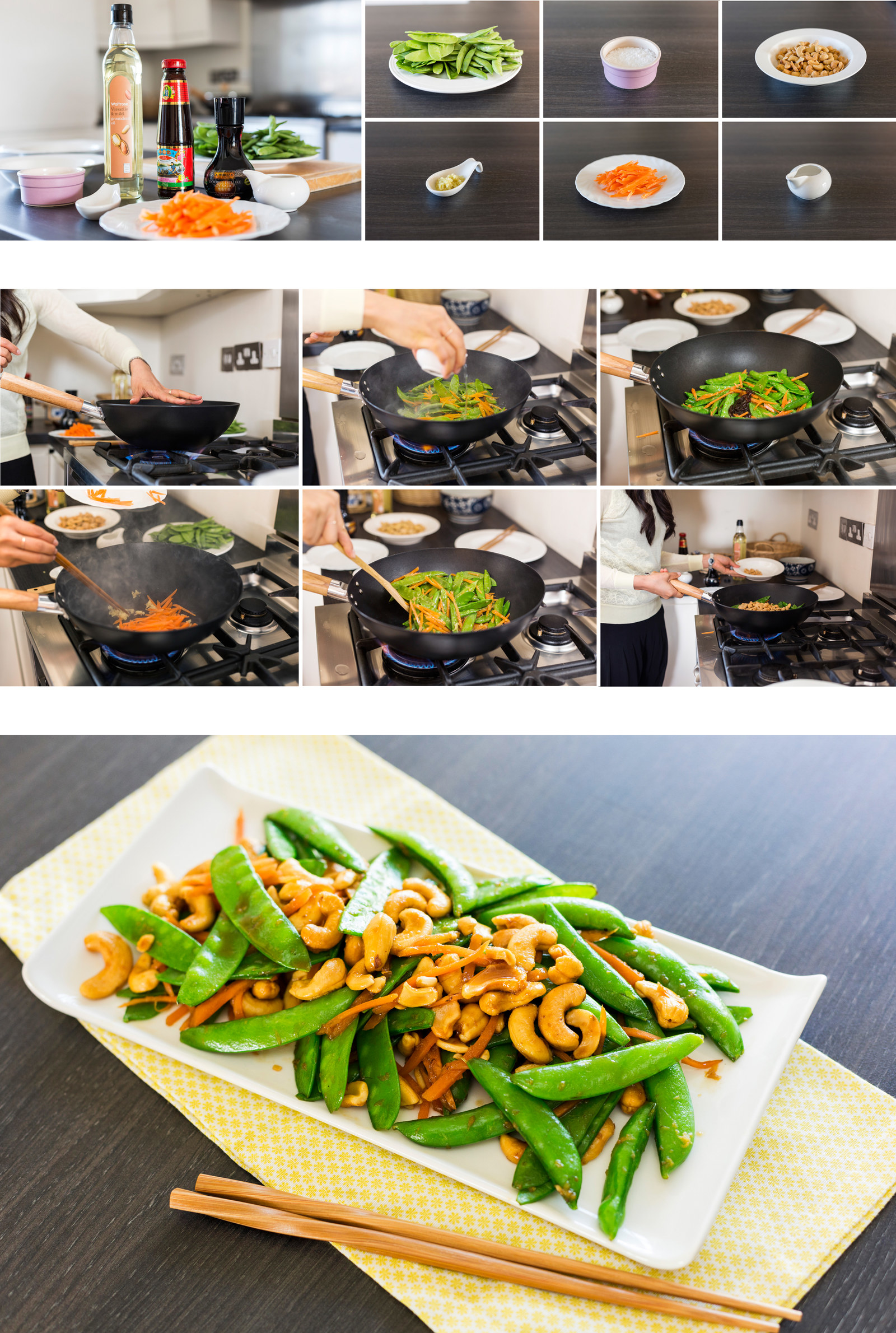
"This can be served as a side dish or as a meal for one – a simple stir-fry of sugar snap peas and mangetout with cashew nuts. If you are watching your salt intake then use raw cashew nuts. The oyster sauce imparts a delicious umami savoury flavour."
Ingredients
- 1 tablespoon groundnut oil
- 1 tablespoon freshly grated ginger
- 1 small carrot (topped and tailed, sliced to julienne)
- 150g sugar snap peas, washed
- 150g mangetout, washed
- 1 tablespoon water
- 1 tablespoon oyster sauce (measured)
- 1 tablespoon LKK double deluxe soy sauce
- 50g roasted cashew nuts
Method:
- Heat a wok over a high heat, then add the groundnut oil and the ginger, and allow to sizzle for 10 seconds.
- Add the carrots, and toss for 15 seconds, then add the sugar snap peas and mangetout. Stir-fry for one minute on high heat.
- Add a small tablespoon of water around the edges of the wok to help create some steam.
- Season with oyster sauce, premium soy sauce, then add in the roasted cashew nuts and toss together well. Serve immediately.
Ching's Spicy Umami Beef & Mushrooms (Serves four)
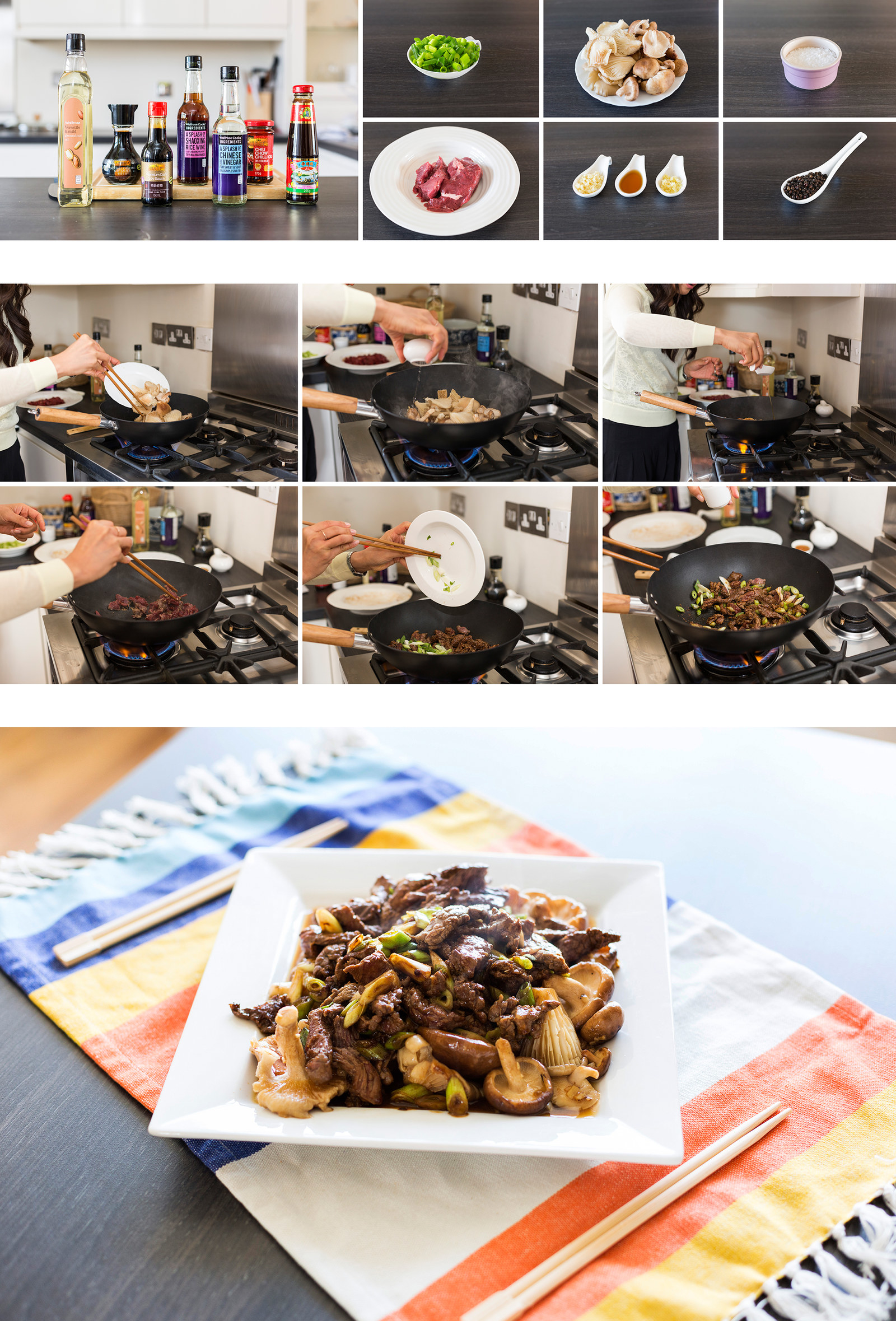
"Mushrooms are full of antioxidants that are so good for you. This is a light, delicious stir-fry using quality beef fillet and a medley of fresh mushrooms."
Ingredients
For the mushrooms:
- 1 tablespoon groundnut oil
- 2 garlic cloves, crushed, peeled, and finely chopped
- 50g fresh shiitake mushrooms
- 50g oyster mushrooms
- 50g enoki mushrooms
- 1 tablespoon water
- 1 teaspoon premium soy sauce
- 1 tablespoon rice vinegar
- ½ teaspoon toasted sesame oil
For the beef:
- 250g beef fillet, cut into thin slices
- 1 tablespoon oyster sauce
- 1 pinch of sea salt flakes
- 1 pinch of ground black pepper
- 1 tablespoon groundnut oil
- 1 knob freshly peeled ginger, grated
- 1 tablespoon Shaoxing rice wine or dry sherry
- ½ teaspoon dark soy sauce
- 3 large spring onions, washed, topped and tailed, and sliced on the angle
- 1 tablespoon light soy sauce
- 1 teaspoon chow chiu chilli oil
Method:
- Season the beef with oyster sauce, sea salt, ground black pepper. Set aside for a few minutes. Meanwhile, prepare the mushrooms by trimming the enoki mushrooms and pulling them apart to separate them into small bunches. Slice the shiitake mushrooms (discard some tough stems) and tear the oyster mushrooms into bitesize pieces.
- Put a wok on to high heat. When it's smoking add the ground nut oil and the garlic, then allow it to sizzle for a few seconds before adding the shiitake mushrooms. Allow to cook for 10 seconds. Add the oyster mushrooms and then the enoki mushrooms, then cook for 30 seconds before adding the soy sauce, rice vinegar, and toasted sesame oil. Transfer to a serving plate.
- Rinse the wok and place it back on the heat. Add groundnut oil. Add the ginger slices and wok fry for a few seconds. Then add the beef fillet slices. Let it sear on one side for 10 seconds, then using a wooden spatula turn the meat over and cook for another 10 seconds. Add Shaoxing rice wine or dry sherry. Season with dark soy sauce and toss well. Add the spring onions, and toss them for a few seconds. Season with light soy sauce and chiu chow chilli oil.
- Remove from the heat, pour the beef over the mushrooms, and serve immediately with jasmine rice.
